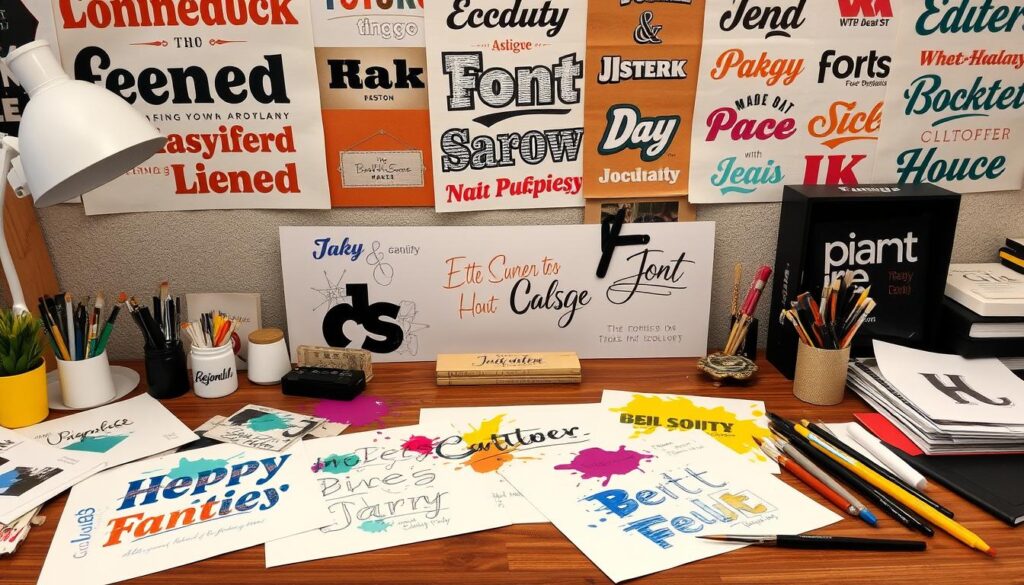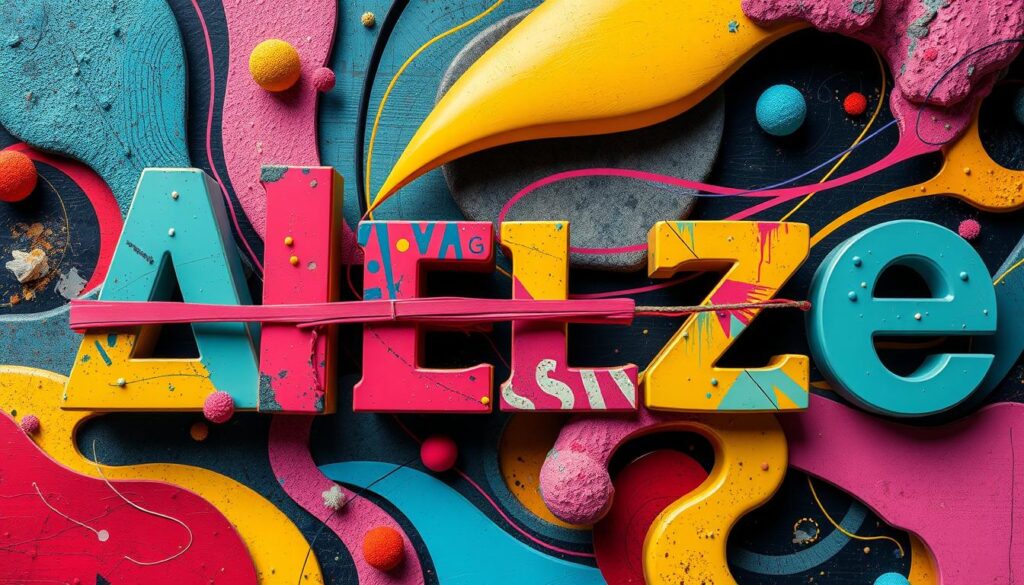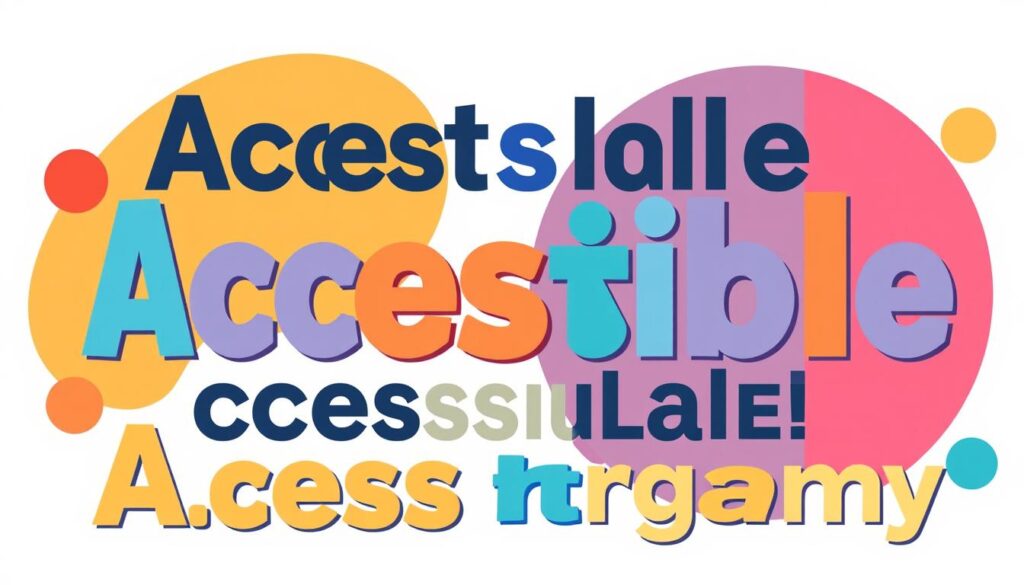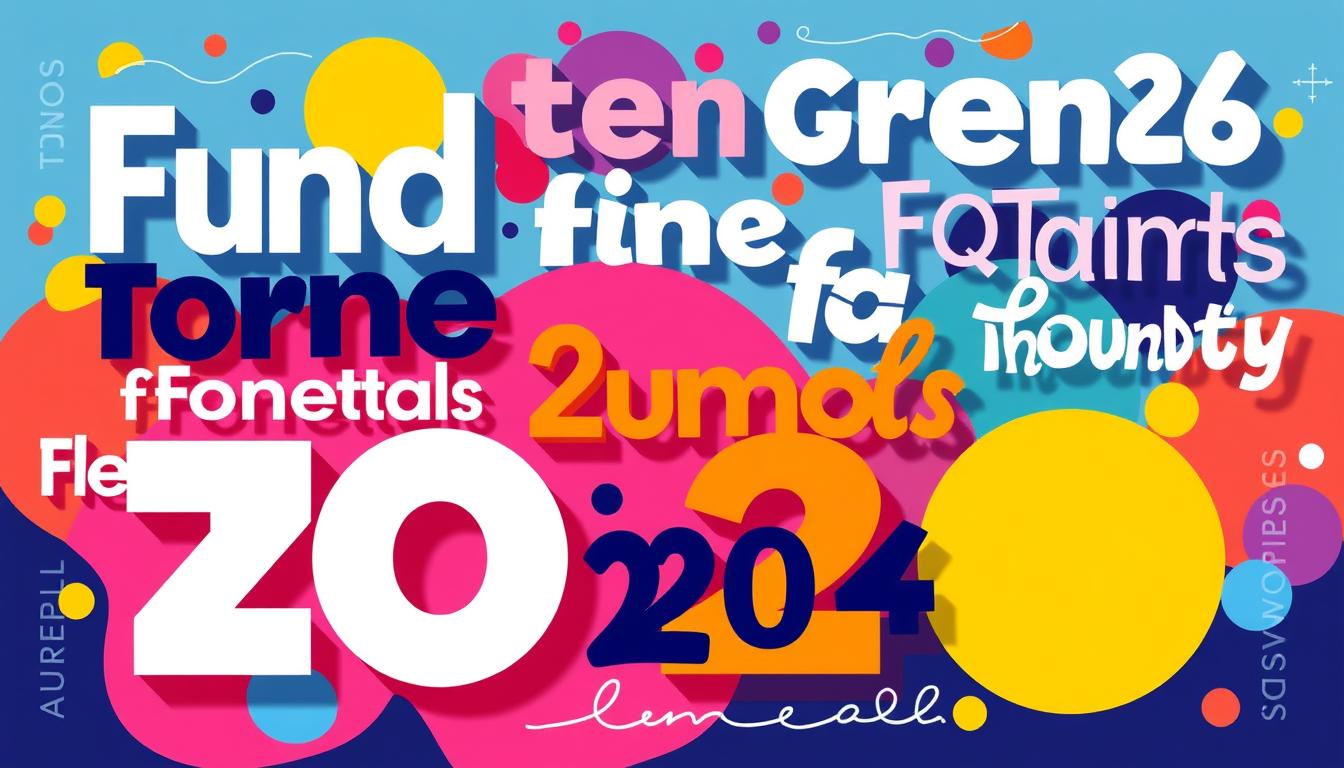As we enter 2024, typography is about to change a lot. The trends for 2024 will grab our attention and change how we see things. We’ll see new font designs and techniques that will make a big impact on brands and digital spaces.
We’ll look at the top Typography Trends for 2024. This includes new font designs, variable fonts, bold serifs, and minimalist sans serifs. We’ll also see how customized typography and AI are changing brand identities and storytelling.
2024 is a big year for typography. By knowing these trends, designers and businesses can create amazing experiences. These experiences will engage and captivate audiences in new ways.
The Evolution of Typography: From Past to Present
Typography has a long and fascinating history. It started with ancient calligraphy and has evolved to today’s digital fonts. This evolution is driven by the need for better communication and design.
Key Historical Influences on Modern Typography
Fonts like Garamond, Baskerville, and Bodoni are still loved today. They were created by skilled craftsmen. These fonts have shaped many modern fonts and design trends.
Their beauty and clearness have stood the test of time. They’ve changed how we see and use written words.
Digital Revolution in Font Design
Digital technology has changed typography a lot. It has made creating fonts easier and more exciting. Designers now use software to make fonts that are unique and customizable.
This change has allowed designers to explore new ideas. They can create fonts that are dynamic and engaging. This has led to a new era of typography.
Typography Trends 2024: Fonts That Define the Year
Looking ahead to 2024, we’re excited about new font trends. These trends will shape the design world. They include classic Serif Fonts and modern Sans Serif Fonts.
The return of Serif Fonts is a big trend for 2024. They add elegance and sophistication to designs. These fonts mix traditional beauty with a modern twist, appealing to many.
At the same time, Sans Serif Fonts will keep their place in the spotlight. They are clean and easy to read, perfect for digital screens and brands. Designers will use them to make bold, eye-catching texts that work well everywhere.
Variable Fonts: The Future of Responsive Typography
The world of web design is always changing, and variable fonts are leading the way. These fonts are a big deal because they make it easy to adjust text for different devices. They help make sure your text looks great on any screen.
Benefits of Variable Fonts in Web Design
Using variable fonts in web design opens up new possibilities. These fonts let designers tweak the look of text in many ways. This means your website can look better on every device, making it more enjoyable for users.
Popular Variable Font Examples
There are many cool variable font options out there. From the fancy Variada to the flexible Amstelvar, these fonts show what’s possible. They’re changing how we design websites for different screens.
Implementation Strategies
Adding variable fonts to your website needs a smart plan. With the right typography tools and methods, you can make the most of these fonts. It’s all about making sure your text looks great on any browser and device.
Bold Serif Renaissance: Classical Meets Contemporary
In the world of Typographic Styles, bold Serif Fonts are making a big comeback. They mix old-time elegance with today’s boldness. Designers are giving classic fonts a fresh look, making them modern and exciting.
This comeback of bold Serif Fonts is more than just looking back. It’s about bringing back the power and class these fonts have. Modern designers use these fonts to make brands, headlines, and digital stuff look serious and classy.
Bold Serif Fonts are changing how we see things. They go from simple logos to big, eye-catching layouts. These fonts work well everywhere, bringing a mix of old-time charm and new boldness. The future of Typographic Styles looks bright, with bold Serif Fonts leading the way.
Minimalist Sans Serif: Less is More in 2024
As we explore Typography Trends 2024, minimalist Sans Serif Fonts stand out. They are clean and simple, fitting well with the modern look. This style is becoming more popular for its sleek feel in many areas.
Popular Minimalist Font Families
At the forefront of minimalist Sans Serif Fonts are Helvetica Neue, Futura, and Gotham. These fonts have sharp lines and are easy to read. They are perfect for designers who want a simple yet elegant look.
Best Practices for Minimalist Typography
Using minimalist Sans Serif Fonts in your designs means paying attention to spacing and text hierarchy. It’s also key to use negative space wisely. This lets the typeface’s simplicity be the focus, creating a clean look that grabs attention.
Minimalism is on the rise, and Sans Serif Fonts will be key in 2024’s visual trends. Designers who master minimalist typography can create designs that are both impactful and timeless. These designs will surely make a strong impression on their audience.
Custom Typography and Brand Identity
In today’s branding world, custom font design is key. A unique, tailored typography can change a business’s game. It helps strengthen their brand and make it more recognizable. Big brands use custom typography tools to make their brands stand out and memorable.

Apple is a great example. Their San Francisco font is a big part of their brand. It’s seen everywhere, making Apple instantly recognizable. Apple’s custom typeface ties their brand together, creating a unified look.
Coca-Cola’s script font is another example. It’s a global symbol that brings up the brand’s heritage and timeless appeal. This custom typeface helps Coca-Cola stay strong and consistent worldwide.
As more businesses want unique branding, we’ll see more custom font design and typography tools. They will help businesses stand out and connect better with their audience.
Mobile-First Typography: Optimizing for Small Screens
In today’s world, where everyone has a mobile device, good typography is key. It makes sure our content looks great and is easy to read on small screens. As we focus more on mobile, we need to make our typography work well on these tiny displays.
Responsive Font Sizing Techniques
To make our text look good on mobile, we use responsive font sizes. We use flexible units like rem or vw so our text fits well on all screens. By following mobile typography rules, our content will look great on any device.
Mobile Typography Best Practices
There are more ways to make our text better for mobile. We pick fonts that are easy to read, use the right line spacing, and choose colors that stand out. Following these tips helps us create web fonts that look good and work well on small screens.
As digital design keeps changing, paying attention to mobile typography is important. By using these techniques and tips, our typography will stay effective, no matter the device.
Experimental and Artistic Typography Trends
In the world of typography, we’re seeing new and bold approaches. These trends are changing how we see and use fonts. They mix traditional styles with fresh ideas, making fonts more than just text.

Designers and artists are now using fonts in new ways. They’re creating fonts that are not just pretty but also tell a story. We see fonts that are stretched, mixed, and layered in creative ways.
These new styles are more than just looks. They help tell stories and evoke feelings. Brands use them to stand out and connect with people in unique ways.
Now, we have fonts made by hand and others that change on their own. The future of typography looks bright and full of possibilities. It’s exciting to think about what new and amazing fonts will come next.
AI-Powered Font Generation and Design
In the world of typography, artificial intelligence (AI) is changing font design and generation. We’re seeing a big change in how fonts are made, thanks to AI tools.
Leading AI Typography Tools
Many new Typography Tools use AI to make font design easier and better. Tools like FontFlow and TypeDNA use machine learning to create unique and customizable font styles. This lets designers try out more creative ideas.
Future Implications for Font Design
As AI gets better, it will change font design a lot. We expect AI to make fonts more advanced, offering personalized and flexible typography. This could change how brands and people show their unique styles through typography.
Typography Accessibility and Inclusive Design
Exploring 2024’s typography trends, we must focus on accessibility and inclusive design. We aim for striking Web Fonts and innovative Typography Trends 2024. Yet, we must ensure our typography is accessible to everyone, regardless of their abilities.
Designing for accessibility means creating typefaces and layouts for all users. This includes those with visual, cognitive, or motor challenges. By focusing on readability, legibility, and adaptability, we make Web Fonts and typographic experiences empowering for all.

Ensuring Web Fonts have good contrast, spacing, and sizing is key. This helps users with visual limitations and makes our designs better for mobile users. Dynamic font scaling and flexible layouts also make our designs work well on different devices and user preferences.
As we dive into Typography Trends 2024, let’s remember true design excellence is inclusive and empowering. By focusing on these principles, we share the beauty and innovation of our typographic creations with the widest audience.
Conclusion
The world of typography is changing fast, with new trends for 2024. Bold serif fonts are coming back, and minimalist sans serifs are gaining popularity. These fonts can grab people’s attention and make brands stand out.
Variable fonts are changing how we use type, making it easy to adjust for different screens. As technology advances, AI will help create and design fonts. This will shape the future of how we see and use text.
In the future, making sure everyone can read will be a big focus. We’ll see more designs that are easy for everyone to use. At the same time, creative and artistic fonts will keep pushing the limits of what’s possible.



